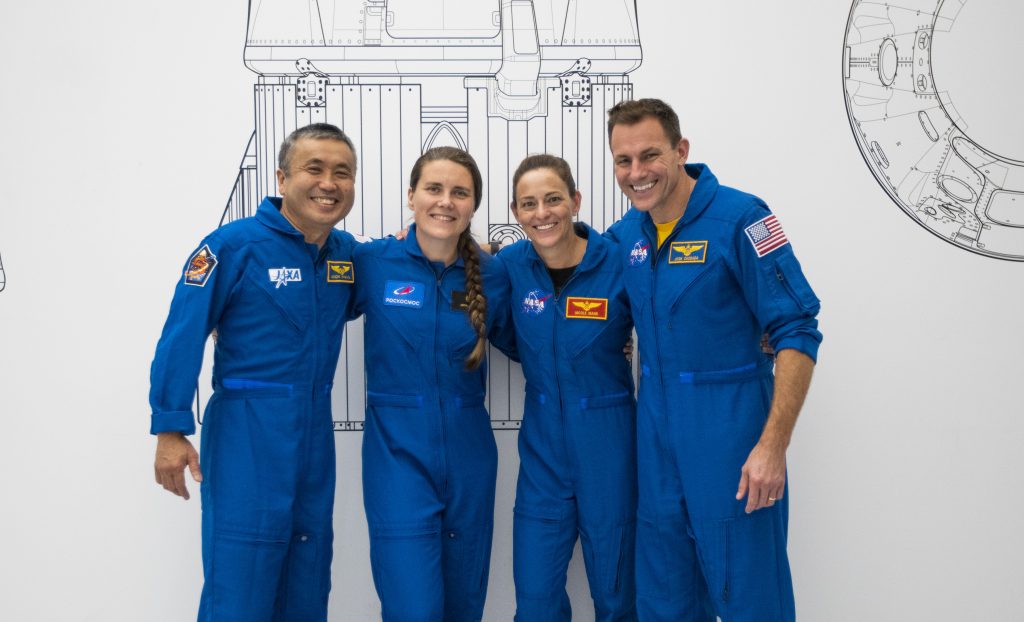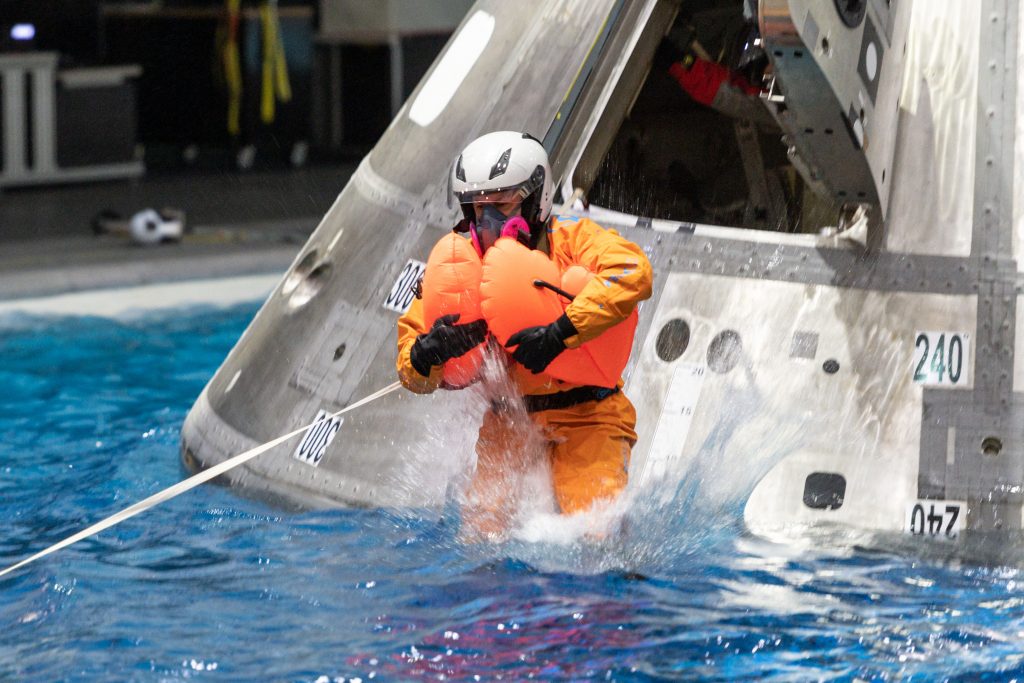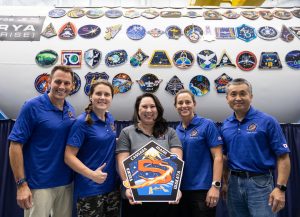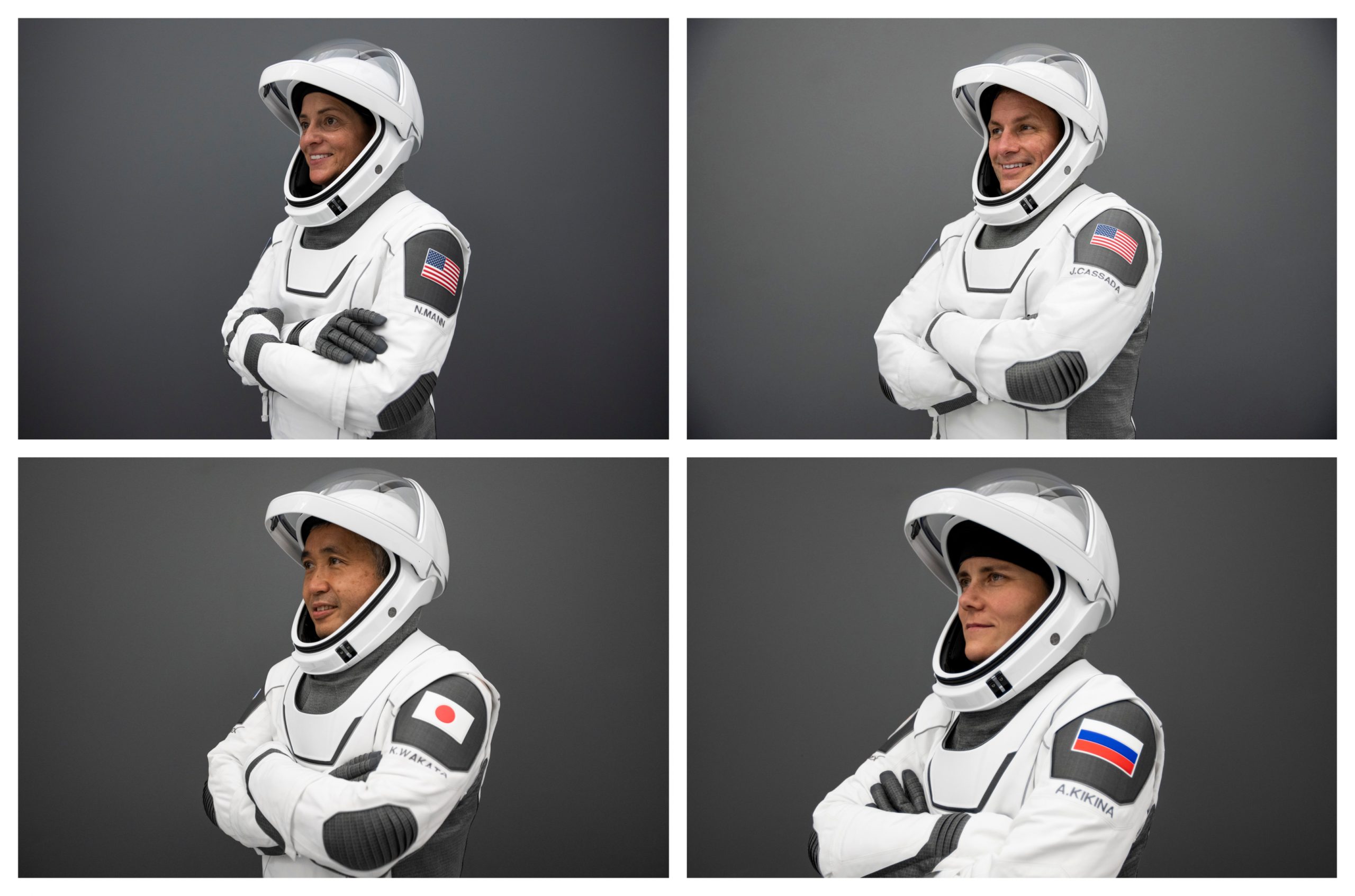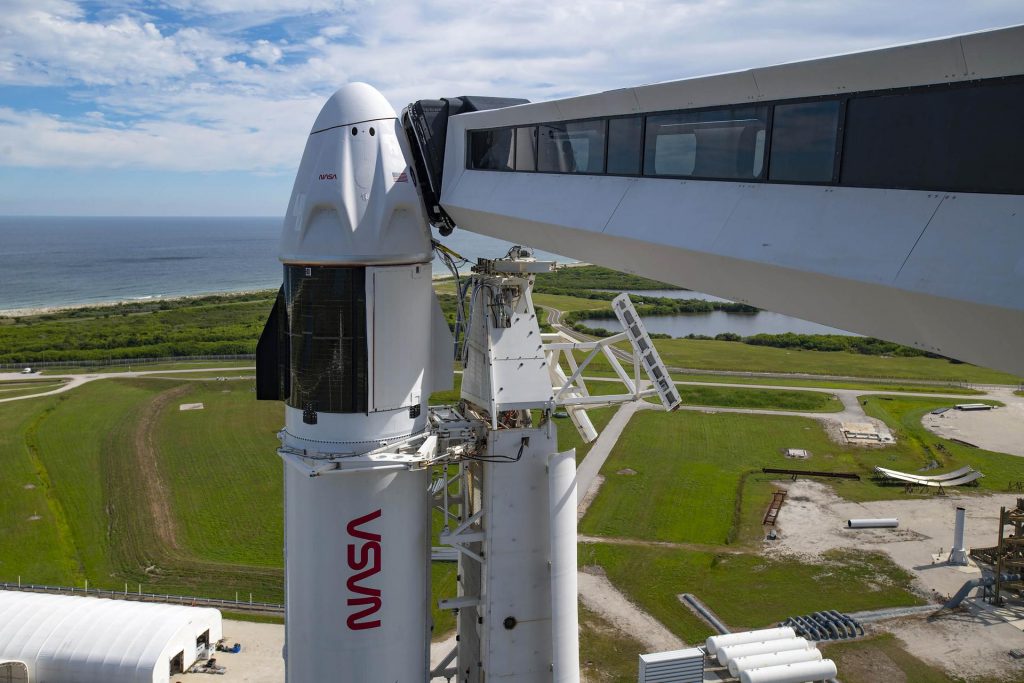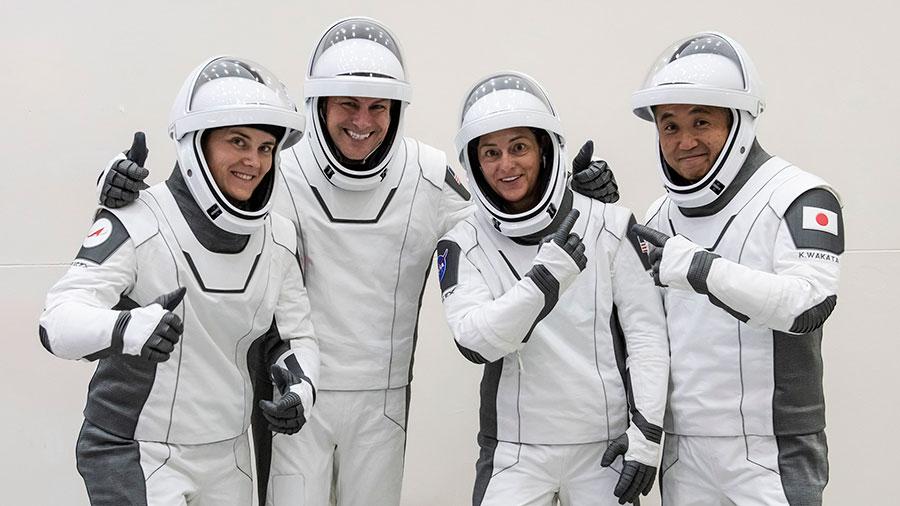
NASA and SpaceX have announced the date for the upcoming Crew-5 launch to the International Space Station. The space station is also orbiting higher today to prepare for next month’s Soyuz crew vehicle swap.
The fifth crewed operational mission aboard a SpaceX Dragon spacecraft has been given a launch date of Oct. 3 from Florida’s Kennedy Space Center. The four SpaceX Crew-5 crewmates, Commander Nicole Mann, Pilot Josh Cassada, and Mission Specialists Koichi Wakata and Anna Kikina will dock Dragon Endurance to the forward port on the station’s Harmony module about 24 hours later.
Several days after that, the four SpaceX Crew-4 astronauts will enter the Dragon Freedom crew ship and undock from Harmony’s space-facing port for a parachute-assisted splashdown off the coast of Florida. Freedom Commander Kjell Lindgren, Pilot Bob Hines, with Mission Specialists Jessica Watkins and Samantha Cristoforetti, have been living and working on the orbital lab as Expedition 67 Flight Engineers since April 27.
The space station received an orbital boost on Wednesday night when Russia’s ISS Progress 81 cargo craft, docked to the Zvezda service module’s aft port, fired its engines for just over six minutes in preparation for a pair of Soyuz crew ships coming and going in late September. NASA astronaut Frank Rubio will take a ride to the station with cosmonauts Sergey Prokopyev and Dmitri Petelin aboard the Soyuz MS-22 crew ship when they launch from the Baikonur Cosmodrome on Sept. 21.
Later in September, Soyuz Commander Oleg Artemyev with Expedition 67 Flight Engineers Denis Matveev and Sergey Korsakov will return back to Earth inside the Soyuz MS-21 spacecraft. The trio joined the Expedition 67 crew on March 18 following a short trip to the station’s Prichal docking module that began with a launch from Baikonur.
Meanwhile, space research benefitting humans living on and off the Earth is still ongoing aboard the orbital lab. Lindgren, Hines, Watkins, and Cristoforetti were back inside the Kibo laboratory module today exploring how skin heals in microgravity. The quartet, using the Life Science Glovebox, is observing space-caused molecular processes that may inform advanced wound treatments and therapies for astronauts and Earthlings.
Artemyev and Matveev continued researching on Thursday how weightlessness affects the human digestive system. Once again, the duo performed ultrasound scans following their breakfast period to learn more about the digestion process to improve crew health and treat Earth-bound conditions. Korsakov participated in an ear, nose, and throat study in the morning, then moved on to learn how international crews and mission controllers can communicate more effectively.
Learn more about station activities by following the space station blog, @space_station and @ISS_Research on Twitter, as well as the ISS Facebook and ISS Instagram accounts.
Get weekly video highlights at: http://jscfeatures.jsc.nasa.gov/videoupdate/
Get the latest from NASA delivered every week. Subscribe here: www.nasa.gov/subscribe

